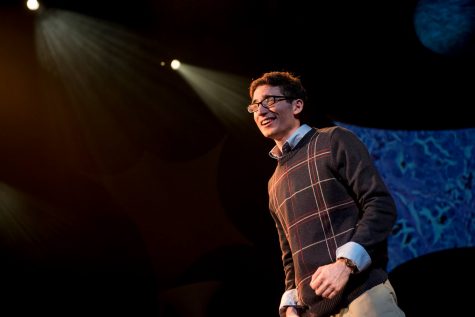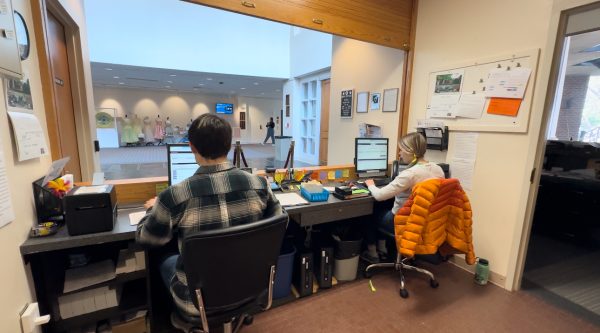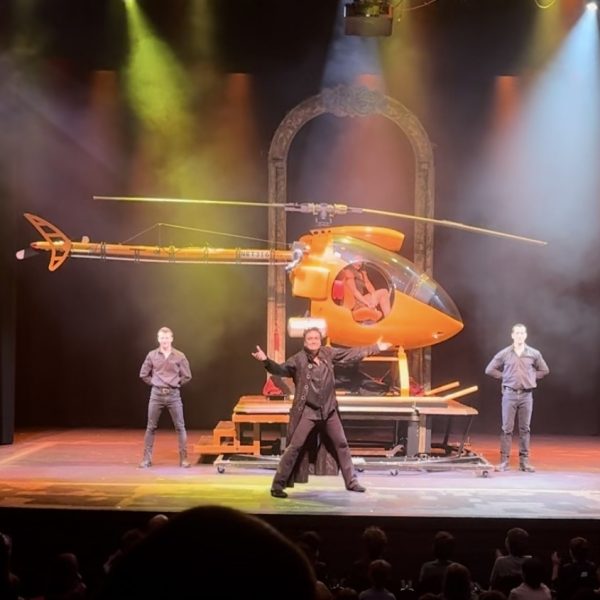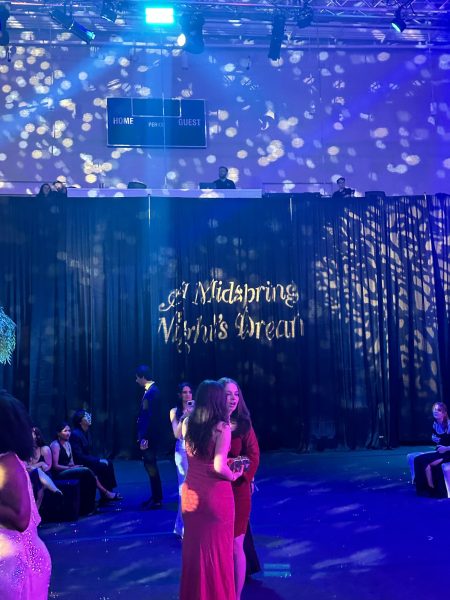The Theory of Relativity draws hundreds
The 2016 student production of “The Theory of Relativity” features scenarios geared toward millennials
October 25, 2016

From cat allergies to the struggle of living up to expectations, Washington and Lee’s performance of “The Theory of Relativity” captured a spectrum of relatable experiences for all audiences.
Drawing on the stories of actual millennials, the musical combined group numbers with multiple monologues and solo pieces that revealed the individual characters’ backgrounds.
Hannah Dewing, ‘19, said one of her favorite parts about the show is how different it is from other musicals.
“A lot of shows are really cheesy, but this one is geared directly towards college-aged people,” Dewing said. “It isn’t flashy or presentational like your average musical; it’s real. It’s hilarious, and it’s heartbreaking.”
The cast was an almost even split between upperclassmen and first-year students, which stage manager Taylor Gulotta, ‘17, called “very unique.”
“I think the chemistry between everyone really shone in the large group pieces,” Gulotta said. “I’ve been able to watch some of my closest friends shine onstage, and I’ve also met talented first-years who have grown so much just in the last eight weeks or so. I’m incredibly proud of this cast.”
Several of the actors, like Dewing and Dan Wetterhahn, ‘20, combined what were originally multiple roles in the script into one multifaceted character. As a first-year student, Wetterhahn faced the additional challenge of understanding the experiences of his character, who describes his path through four years of college.
“I’ve been [at W&L] for six weeks, so I had to have the ability to find a nuanced, mature perspective on something like that, when I am actually a greenhorn in every way you can describe,” Wetterhahn said.
After learning the stories of multiple seemingly unrelated characters, the audience learns in the final scene that they are actually all connected in some way, referencing the show’s emphasis on relativity.
Dewing said that for her, this aspect of the show stressed the idea of ‘sonder,’ or the recognition that others live a life as intricate as your own.
“We’re all connected to each other whether we know it or not, and it is completely up to you to decide how to go about your life with that in mind,” Dewing said. “Every single random passerby has a life just as complex as yours. They have dreams and parents and friends and doubts and fears and a life that you may know absolutely nothing about, and you get to be a part of that life for at least one second.”
Although this was the part that stood out to her, Dewing admitted the show is very open to the audience’s interpretation.
“The great thing about this musical is that it leaves room for the audience to think for themselves,” Dewing said. “We don’t hand you any answers.”
Wetterhahn agreed.
“The purpose of art is to help grow the person,” Wetterhahn said. “The show is diffuse enough that I think there is tremendous potential for people to gain a perspective or be prompted to introspection after seeing the show. They could either change something about themselves, or reach a deeper realization about themselves.”












